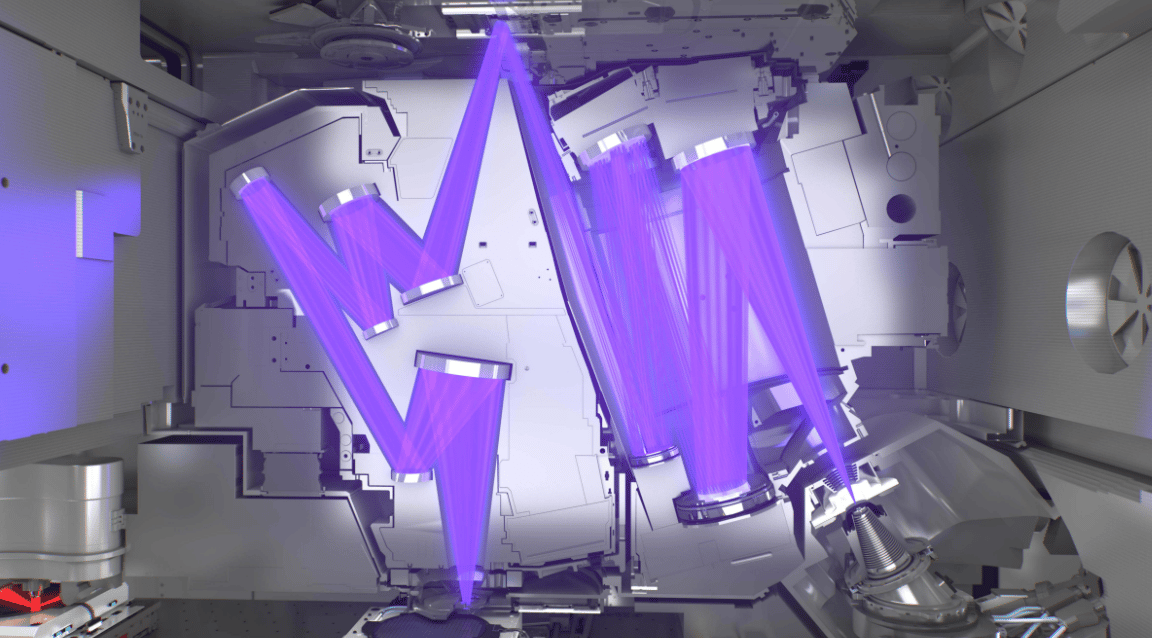- Roko's Basilisk
- Posts
- The Lithography War
The Lithography War
Plus: Claude levels up, Windows Copilot expands senses, Apple may ditch the notch.
Here’s what’s on our plate today:
📰 Why the U.S. is blocking advanced chipmaking tech from reaching China?
🧠 Smarter Claude, sensory Copilot, sleeker MacBook.
💡 Use the ASML site as a stealth resource on lithography’s global impact.
🗳️ Monday Poll: The global chip race just got hotter…
Let’s dive in. No floaties needed…

Focus on winning deals, not updating CRM fields.
Building a company is hard enough, and your CRM shouldn’t feel like another job.
Clarify's AI updates your pipeline, preps you for meetings, and takes notes so nothing slips through the cracks. Close more deals without the busywork.
Up and running in minutes, free to start.
*This is sponsored content

The Laboratory
Inside the US push to block advanced chipmaking tech from reaching China
Recently, the White House’s AI and crypto czar, David Sacks, said that restricting the sale of extreme ultraviolet (EUV) lithography equipment to China is the "single most important export control" the United States has in the area of semiconductors. As one of the top technology and finance advisors to the current administration, his words should not be taken lightly—especially given the existing restrictions on the export of powerful AI chips to China by the US.
But why, when the US has already restricted the export of AI chips and technology components to China, does it now want to limit access to EUV lithography equipment? What exactly is lithography, and how do these restrictions fit into the US’s broader goal of slowing China’s progress in the AI race? Let’s find out.
What is lithography?
Lithography is the method of making accurate, reproducible prints. First invented in the 18th century, the technique was initially used to produce printed materials.
The process involved printing on porous flat surfaces, such as limestone. These surfaces were treated with acid, gum, or water, then rolled with ink. The ink would adhere only to the desired areas, allowing for the creation of multiple copies of the original design.
What is EUV lithography?
Over the centuries, lithography evolved and was eventually adapted for semiconductor manufacturing. Traditional photolithography used ultraviolet (UV) light to project circuit patterns onto silicon wafers through photomasks.
As the demand for smaller and more complex chips grew, deep ultraviolet (DUV) lithography gave way to EUV lithography.
The primary advantage of EUV lithography is its ability to print extremely small features using 13.5 nm wavelength light. This enables the creation of components smaller than 12 nm—about one-tenth the width of a human hair—by using UV light to etch complex patterns.
Why EUV matters in semiconductor manufacturing
EUV lithography is essential for manufacturing advanced chips at 7 nm, 5 nm, and even 2 nm nodes, allowing for higher transistor density and better performance.
Put simply, all modern chips that power everything from computers and smartphones to AI systems are made using wafers produced with EUV lithography.
ASML, a Dutch company, is currently the sole manufacturer of EUV lithography machines. These machines are vital for making the most advanced semiconductors and have become a central issue in global trade, particularly between the United States and China.
Why the US wants to restrict semiconductor tech to China
The US government argues that restricting semiconductor technology exports to China is necessary to safeguard national security, maintain technological leadership, and limit the development of China’s military capabilities.
Advanced semiconductors are critical to military technologies, including artificial intelligence, quantum computing, and sophisticated weapons systems. To prevent these technologies from enhancing China’s military strength, the US has added several Chinese companies to its export blacklist.
Another key motivation is preserving America’s global edge in innovation. Limiting China’s access to the latest semiconductor tools helps the US maintain its leadership in critical technologies.
How the US is blocking China’s access to lithography technology
The US has partnered with allies like the Netherlands and Japan to enforce export controls that collectively limit China’s access to advanced semiconductor tools. Key measures include:
Blocking EUV Equipment Sales:
Since 2019, the US has successfully lobbied the Dutch government to prevent ASML from selling EUV machines to China.
Expanding Export Controls:
In October 2022, the US Department of Commerce introduced broad export controls requiring companies to obtain licenses before selling advanced semiconductor manufacturing equipment to China. These controls restrict China's ability to produce chips at 14 nm nodes and below.
Blacklisting Chinese Companies:
The US has blacklisted numerous Chinese tech companies and research institutes, cutting off their access to American-origin technology and ensuring that EUV and other advanced lithography tools do not reach China.
How is China responding to US restrictions?
The US aims to block China’s access to cutting-edge semiconductor manufacturing technologies, particularly those made by ASML.
However, as is often the case with such restrictions, the results may not align with the original intent. While China cannot currently obtain EUV equipment, it still has access to less advanced deep ultraviolet (DUV) lithography systems.
In response, China is reportedly accelerating efforts to develop its own EUV lithography technology. The Shanghai Institute of Optics and Fine Mechanics, under the Chinese Academy of Sciences, is said to have successfully created a laser-produced plasma (LPP) EUV light source, potentially offering an alternative to the CO₂ lasers used in ASML’s machines.
Additionally, China has committed substantial financial resources to domestic semiconductor innovation, investing around $40 billion in equipment development. This underscores China’s determination to achieve self-sufficiency in chipmaking.
The road ahead
The US’s decision to restrict EUV lithography equipment sales to China is more than a trade policy; it’s a strategic move in the ongoing geopolitical battle for technological supremacy.
These restrictions may slow China’s short-term progress in semiconductor and AI development, but they also serve as a catalyst for China to double down on innovation. With heavy investments and focused research, China is positioning itself to build alternative technologies and reduce dependence on foreign suppliers.
In the long run, these export controls could backfire by accelerating China’s push for semiconductor independence. While the US may maintain technological dominance for now, the evolving dynamics suggest a future where global leadership in chipmaking could be far more contested. The outcome of this rivalry will likely shape not just the tech sector but the balance of economic power in the decades ahead.


Roko Pro Tip
 | 💡 Build with dependency in mind.Every technological edge has a shelf life. Whether it’s GPUs or lithography machines, today’s chokepoints are tomorrow’s open-source workaround. |

Stay at the forefront with daily Memorandum tech insights.
Memorandum distills the day’s most pressing tech stories into one concise, easy-to-digest bulletin, empowering you to make swift, informed decisions in a rapidly shifting landscape.
Whether it’s AI breakthroughs, new startup funding, or broader market disruptions, Memorandum gathers the crucial details you need. Stay current, save time, and enjoy expert insights delivered straight to your inbox.
Streamline your daily routine with the knowledge that helps you maintain a competitive edge.
*This is sponsored content

Bite-Sized Brains
Windows Copilot gets multimodal: Microsoft’s AI assistant can now see, hear, and respond to users via camera, mic, and text. The rollout starts today on select Windows 11 machines.
MacBook Pros may lose the notch: Apple is testing high-end laptops with ‘touch hole-punch’ screens and slimmer bezels. A release could come as early as 2026.
Claude gets skills like a real agent: Anthropic is adding modular skills to Claude, letting it handle emails, do research, and access tools more intelligently, à la AutoGPT.

Monday Poll
🗳️ Do U.S. chip export bans to China help or hurt long-term innovation? |

Meme Of The Day
average Java developer
— Wojak Codes (@wojakcodes)
10:35 AM • Oct 13, 2025

Rate This Edition
What did you think of today's email? |





